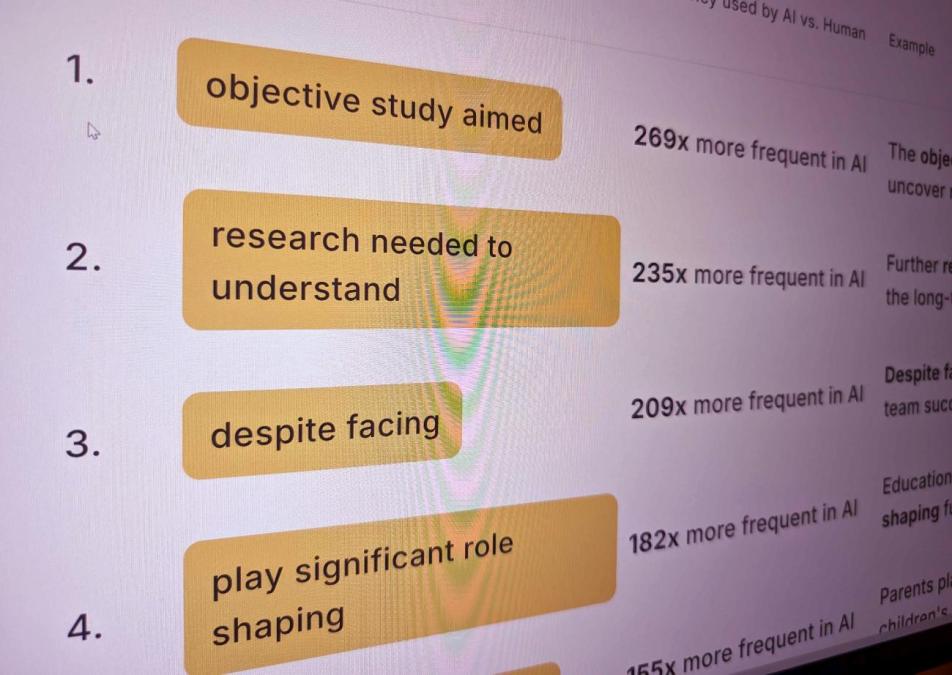New GPTZero feature flags AI’s favorite words and phrases

The AI detection company GPTZero on Monday unveiled two new features intended to lift the curtain on what differentiates the writing produced by large language models versus human authors.
One of the new features is a list of the top 50 most common words and phrases preferentially used by artificial intelligence, compared to humans. Topping the list is “objective study aimed,” an ordinary phrase the company estimated is 269 times more likely to be used by AI than by humans.
Edward Tian, GPTZero’s chief executive, said he thinks of the list, which will be updated monthly, as “a kind of encyclopedia of AI language.”
Other favorite AI phrases include “research needed to understand,” “despite facing,” “today’s digital age” and “expressed excitement.”
The second new feature integrates the list into GPTZero’s AI detection service, which since its launch in January 2023 has allowed users to copy and paste text into a box to see which parts might be AI generated. In addition to that standard functionality, which Tian described as “theoretical” and probability-based, users can have the tool highlight the most commonly used AI phrases in their texts.
Tian said this new feature is “practical” in that it encourages users to make their own determinations regarding GPTZero’s output and think about generative AI’s choices.
“We’re now giving tools for human writers to monitor what AI is doing and be one step ahead of this chess game, instead of the AI models only being understanding human data,” he said.
Most generative AI tools share a distinctly authoritative and comprehensive writing style that overshadows their models’ shortcomings in nuance and accuracy. By default, generative AI responses resemble highly structured high-school essays — and in fact, Tian said, one of the common AI phrases his team noticed before completing the new features was “in conclusion.” But as it turns out, people use “in conclusion” a lot too, so it didn’t make the list.
But beyond putting numbers to generative AI’s word-choice tendencies, it can also serve as an educational tool. Similar to how writing students study lists of cliches and jargon to avoid, Tian said, his company’s phrase list affords writers a new vantage point from which to survey their work. A writer who uses the phrase “today’s fast paced world,” for instance, can ask herself if she really wants to sound like ChatGPT.
Tian said GPTZero is used for a wide range of applications, including analyzing procurement documents and spotting fake product reviews, but that the majority of its users are students and educators, and that he’s hearing all the time about new uses of AI in classrooms.
“How teachers have used our tools has really evolved over the last year,” he said. “It started out being this binary world of, ‘Is this AI?’ That’s the main question people were asking. Now it’s evolved to, ‘Oh, I found AI in my classroom. What’s next?’”

